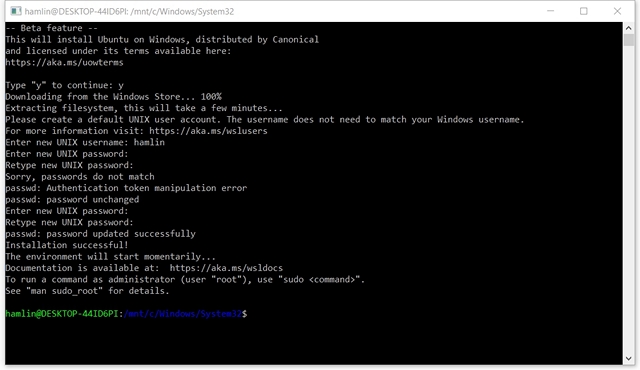
- Windows bash hide username and systemname how to#
- Windows bash hide username and systemname install#
The encrypted version of our rusty!herring.pitshaft password is written to the terminal window.Ĭhmod 600. Substitute with a robust password of your choosing.

The encryption password is used in the encryption and decryption processes. There are a lot of parameters and options in the openssl command.

We need to provide an encryption password when we do. We’re going to encrypt that password using openssl.
Windows bash hide username and systemname install#
On Manjaro Linux, we can install OpenSSL with: sudo pacman -Sy opensslįinally, to install sshpass, use this command: sudo pacman -Sy sshpassīefore we get into using the openssl command with scripts, let’s become familiar with it by using it on the command line. Let’s say that the password for the account on the remote computer is rusty!herring.pitshaft.

The command to install sshpass is: sudo dnf install sshpass On Fedora, you need to type: sudo dnf install openssl To install sshpass, use this command: sudo apt install sshpass On Ubuntu, type this command: sudo apt get openssl However, if it isn’t, it only takes a moment to install.
Windows bash hide username and systemname how to#
RELATED: How to Create and Install SSH Keys From the Linux Shell Installing OpenSSL and sshpassīecause a lot of other encryption and security tools use OpenSSL, it might already be installed on your computer. We’re going to make use of the well-known OpenSSL toolkit to handle the encryption and a utility called sshpass to feed the password into the SSH command.


 0 kommentar(er)
0 kommentar(er)
